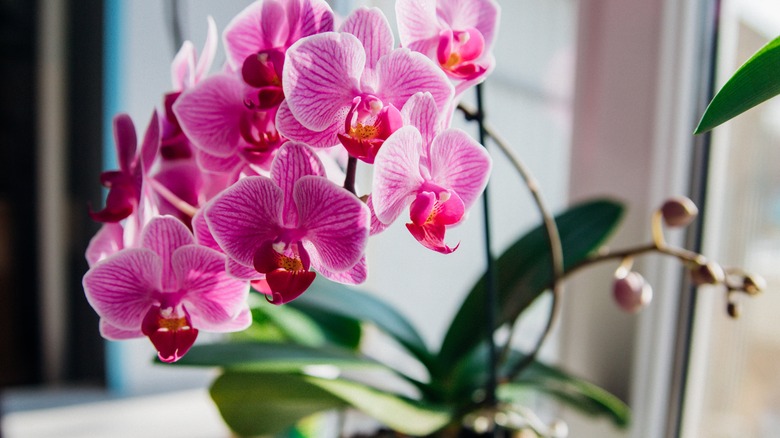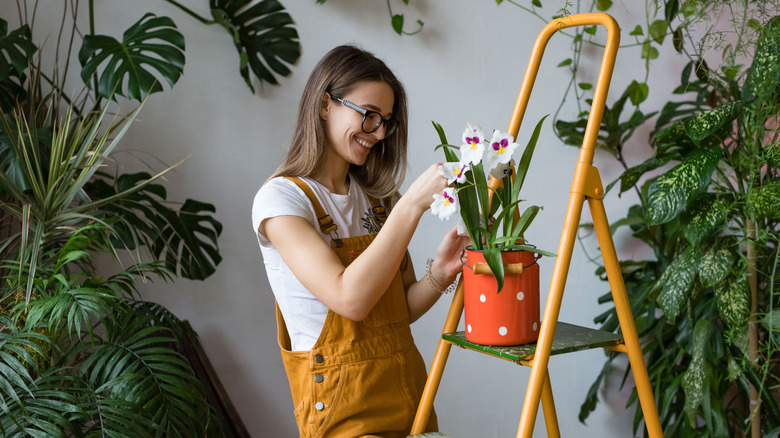Why Blowing On Your Orchid Can Prevent It From Death (And How To Do It Right)
Orchids are some of the most unique plants you can introduce to your indoor home garden. They are guaranteed to spruce up your home décor with their dazzling colors and tasteful shapes. Unfortunately, Phalaenopsis orchids are prone to a bacterial and fungal disease known as crown rot, which happens when you leave water on the crown of the plant. Making this common mistake is sure to kill your precious orchid, but there is an equally easy solution: all your orchid needs is the breath of life. The same way CPR can save people from a health emergency, your breath can save your orchid from an unnecessary death. Blowing on the crown of your orchid to dry up moisture goes a long way in ensuring it doesn't fester into crown rot.
But that's just one part of what to do in case moisture gets inside of it. Orchids are very delicate plants and susceptible to rot if not watered properly. The crown rot disease will start off as dark spots on the orchid's leaves, eventually yellowing them out and causing them to wilt and fall off. This will happen despite the soil being watered enough because the rot prevents the uptake of water, which kills the plant. To prevent all of this, knowing how to properly water your orchids is paramount.
Ventilation around the orchid after watering will dry up stray droplets
Watering your orchid is far from an extreme sport. Nevertheless, some tips can save your plant from succumbing to crown rot. Water your orchids in the morning rather than in the evening or night. This will give it ample time to dry out as the day progresses. After giving your plant a drink of water, use a dry cloth to wipe the leaves clean and free of moisture. Make sure you blot out any drop at the crown of the orchid to prevent the rot. Finally, give it a nice, long blow to be certain the area is dry. If you blow out a few droplets of water, wipe them away with the cloth until it's bone dry.
Bacteria and fungi need humidity and moisture to survive and because you can't sit there all day blowing your face blue, you can opt for an alternative. Set up a small standing fan positioned right next to the orchid plant and give it the responsibility of blowing air at it all day. This will save you the time and stress of doing it yourself. If you find that crown rot has already started to spread, sprinkle some cinnamon powder from your kitchen cabinet over the affected area and into the crown. Cinnamon is a natural fungicide and antibacterial so it can hopefully salvage what's left of your precious plant, but the key is early detection.

